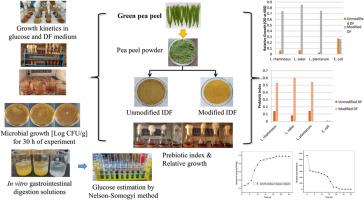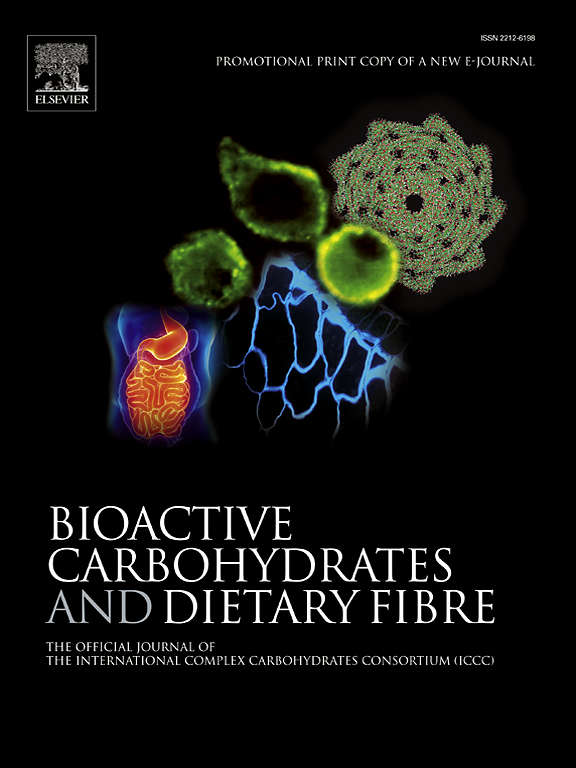酶解改性豌豆皮膳食纤维的益生元活性:体外研究
IF 3.6
引用次数: 0
摘要
该研究通过使用三种益生菌(鼠李糖乳杆菌 ATCC 7469、清酒乳杆菌 ATCC 15521、植物乳杆菌 ATCC 8014)和一种致病菌(大肠杆菌 ATCC 4157),检测了豌豆皮酶解改性不溶性膳食纤维的益生元指数。经测定,益生元潜力的正值高于菊粉、未改性膳食纤维和标准葡萄糖。在 MRS 中培养鼠李糖乳杆菌(Lactobacillus rhamnosus ATCC 7469)30 小时后,葡萄糖培养基的细胞密度为 7.45 ± 0.08 log CFU/mL,膳食纤维培养基的细胞密度为 7.37 ± 0.07 log CFU/mL。生长动力学分析表明,膳食纤维培养基对乳酸杆菌有积极影响。膳食纤维能提高益生菌的细胞生物量和相对生长率。因此,在体外模拟胃肠道模型中,结肠微生物群有助于细菌发酵膳食纤维。本文章由计算机程序翻译,如有差异,请以英文原文为准。

Prebiotic activity of enzymatically modified pea peel dietary fiber: An in vitro study
The study examined the prebiotic index of enzymatically modified insoluble dietary fiber from pea peel by using three probiotic bacterias; Lactobacillus rhamnosus ATCC 7469, Lactobacillus sakei ATCC 15521, Lactobacillus plantarum ATCC 8014 and one pathogenic bacteria; Escherichia coli ATCC 4157. A positive value for prebiotic potential was determined which was greater than inulin, unmodified dietary fiber, and standard glucose. The 30 h of cultivation, the cell density obtained from Lactobacillus rhamnosus ATCC 7469 culture conducted in MRS was 7.45 ± 0.08 log CFU/mL in glucose medium and 7.37 ± 0.07 log CFU/mL in dietary fiber medium. Growth kinetics analysis showed a positive effect for Lactobacillus spp. in DF medium. DF could boost cell biomass and relative growth rate of probiotic bacteria. Thus, the microbiome of the colon facilitates dietary fiber fermentation by bacteria shown in in vitro simulated gastrointestinal model.
求助全文
通过发布文献求助,成功后即可免费获取论文全文。
去求助
来源期刊

Bioactive Carbohydrates and Dietary Fibre
Agricultural and Biological Sciences-Food Science
CiteScore
6.00
自引率
0.00%
发文量
38
期刊介绍:
 求助内容:
求助内容: 应助结果提醒方式:
应助结果提醒方式:


